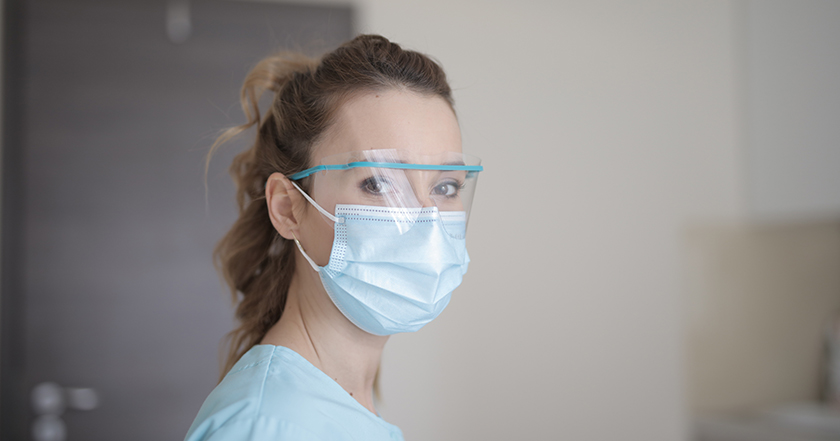The recent novel coronavirus pandemic has paused clinical learning for nursing and medical students across the United States. To prevent spreading the COVID-19 virus, the Association of American Medical Colleges (AAMC) suspended all interactions between students and patients on March 17. The suspended interactions include clinical rotations, and these suspended interactions were ordered to remain in effect for two weeks.
The AAMC has recommended that medical institutions postpone rotations for students arriving from other schools and find local alternatives for students who were going to perform away rotations.
Many institutions have complied with the AAMS’s request and have canceled all rotations, while others have canceled most rotations. For instance, the University of Arkansas for Medical Sciences, the University of North Carolina School of Medicine, and the Universities of Pennsylvania and Minnesota have all canceled clinical rotations to some degree.
In addition to suspending clinical rotations, shelf exams are also on hold. Shelf exams are administered in large groups with each clinical rotation. Right now, being in large groups understandably makes many people feel uncomfortable.
This is harsh news for med school and nursing students since clinical rotations are required for graduation. Many students are wondering how they’re going to get in the 100+ hours required before graduation in May. For now, it looks like many graduations will be postponed.
Clinical rotations are on hold for two main reasons
There are two main reasons for placing clinical rotations on hold. The most obvious reason is to stop the spread of the novel coronavirus that causes COVID-19. The second reason is to preserve personal protective equipment (PPE).
Clinical rotations would increase exposure to the novel coronavirus
At a time when the virus seems to be spreading faster than ever, it’s important to limit exposure in every way possible. To limit exposure, several states have issued stay-at-home and shelter-in-place orders and anyone showing symptoms or testing positive is being asked to self-quarantine for at least 14 days. It makes equal sense to put clinical rotations on hold in an effort to slow the spread.
Some argue that not allowing students to interact with patients sends the wrong message about their responsibility to patients because providing care often requires putting oneself at risk. While that’s true, students are inexperienced and one small mistake can transfer the virus to other vulnerable patients. Medical professionals – even with minimal experience – aren’t likely to make those same mistakes.
Clinical rotations would waste PPE needed by medical professionals
A few months ago, there were more than enough N95 masks, gowns, face shields, and other PPE for medical and nursing students to use properly during their clinical rotations. Just a few months ago, PPE could be discarded after each use. Right now, it must be reused.
The United States started feeling the PPE shortage around early March when doctors and nurses were asked to reuse their masks and face shields even after interacting with an infected patient. Some medical professionals are being provided with two masks per week – one mask to wear around infected patients and another mask to wear around everyone else.
In addition to wasting PPE in short supply, it’s downright dangerous to allow clinical rotations at a time when safety protocols are designed to preserve equipment.
Performing clinical rotations during a PPE shortage will hard-wire bad habits
Dropping inexperienced students into a situation where they’ll need to violate safety protocols to preserve PPE is a bad idea. A student’s first real experience with patients shouldn’t be under circumstances that require them to reuse masks.
Even though students know PPE safety rules are being bent due to lack of supply, that knowledge won’t prevent them from hardwiring those bad habits. The habits students develop with their first patient interactions are likely to become long-term habits. When PPE is abundant once again and students need to switch gears, those bad habits will be hard to break.
Medical and nursing students need to be taught correctly from the start and all hands-on participation should strictly adhere to the highest safety protocols. If students can’t get hands-on experience that upholds safety protocols, they need to wait until things settle down and supplies are back in stock.
Without clinical rotations, can students still graduate on time?
Medical students all over the U.S. are worried about graduating on time. Clinical rotations are required for graduation, but with rotations on hold, students have to wait to complete that part of their education. We don’t know when schools will reopen or when medical facilities will be suitable for clinical rotations once again.
Nobody knows how that’s going to play out yet – every institution will be different. If the pandemic subsides before May, some students might have enough time to get in their last few hours. Other students who need 100 hours might not be so lucky.
Simulation training will move students closer to graduation
Some institutions are making use of the time by streaming simulation training online for their students. Simulations can’t replace hands-on experience and only 25% of training can be completed using simulations. However, simulation training is a proven training method that gets results.
When used right, simulation training can help medical and nursing students graduate faster. During a pandemic, when students can’t participate in a live simulation, just watching a previously recorded simulation with instructor feedback has been proven to prepare students for real-life scenarios.
Meeting an unfamiliar situation with a patient can cause students to feel nervous and lose confidence. Simulation training gives students experience with situations they’re likely to encounter with real patients.
State regulators are being pressed to allow more simulation training
Prior to the COVID-19 pandemic, some private nursing schools have been trying to convince state regulators to allow more simulation training to count toward graduation. Their main argument is that simulation training is advanced enough to be as effective as training inside a hospital or clinic. This is true to a large extent, provided the right technology is used.
VALT improves simulation training
VALT is a flexible video recording solution for simulation training, proven to enhance and improve the learning process. VALT makes it easy for instructors to record, observe, and debrief medical students training in a simulation environment.
If you’re looking for a way to improve your simulation training, VALT is the ideal solution. Learn more about VALT by requesting a demo today.







